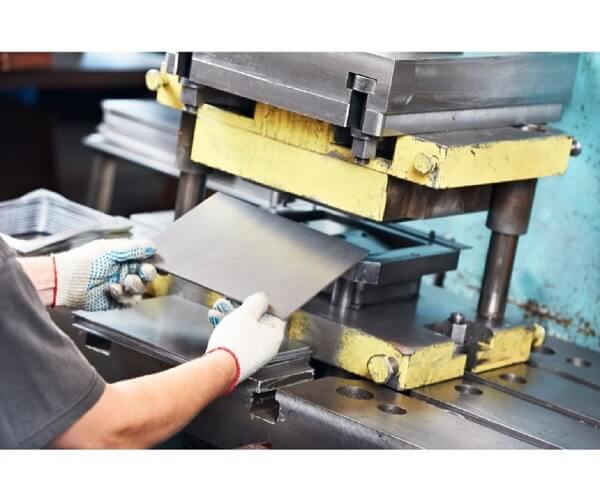Metal Stamping Procedures: From Prototyping to Automation
Wiki Article
The Advancement of Metal Stamping Procedures: Advancements and Applications
The world of steel stamping procedures has actually seen a transformative trip marked by continuous technology and adaptation to fulfill the needs of modern industrial techniques. The applications span across a range of industries, each benefiting distinctively from the improvements in steel stamping processes.Typical Metal Stamping Methods
Typical steel marking techniques have long been the structure of making procedures in various markets due to their effectiveness and accuracy. The procedure entails forming a metal sheet or coil into a preferred form by pressing it between a die and a punch. This technique is commonly utilized for generating huge quantities of parts with high precision at a rapid speed.Among the crucial advantages of conventional steel stamping methods is the capability to preserve tight tolerances, making sure that each component fulfills the called for requirements continually. This degree of accuracy is important in markets such as automobile, aerospace, and electronics, where even minor deviations can result in significant issues.
Furthermore, typical steel stamping methods provide affordable solutions for automation contrasted to other making approaches. The capacity to mark components in quick succession lessens production time and minimizes labor expenses, making it an appealing alternative for services looking to enhance their manufacturing processes.
Appearance of High-Speed Stamping

One of the vital advantages of high-speed marking is its capacity to preserve accuracy and consistency also at accelerated handling speeds. This precision is vital in markets where limited tolerances and complex styles are required. In addition, high-speed marking allows for the handling of a variety of materials, consisting of aluminum, stainless steel, and copper, additional increasing its applicability throughout different fields.
Moreover, the appearance of high-speed stamping has made it possible for producers to satisfy the growing demand for intricate components in industries such as vehicle, aerospace, and electronic devices (Metal Stamping). By leveraging the speed and accuracy of high-speed stamping modern technology, companies can improve their competition in a rapidly developing market landscape
Innovations in Tooling Technology
With the advancement of high-speed marking allowing improved precision and efficiency wikipedia reference in steel creating procedures, the field of metal marking has actually seen considerable advancements in tooling innovation. Tooling innovation plays a vital function in metal marking procedures, influencing elements such as product top quality, manufacturing speed, and overall cost-effectiveness.By making use of these advanced products, tooling manufacturers can create passes away and mold and mildews that you could try these out endure the high stress and temperature levels involved in metal stamping procedures, resulting in longer tool life and improved production performance. Overall, these developments in tooling innovation have reinvented the metal stamping industry, enabling makers to attain greater degrees of precision, performance, and expense financial savings.
Integration of Automation in Stamping
As automation remains to reshape the landscape of metal stamping processes, the integration of automated systems has ended up being progressively common in modern-day production centers. Automated systems use many advantages in steel marking, consisting of raised performance, boosted precision, and improved security. By integrating automation right into marking procedures, suppliers can lower cycle times, decrease product waste, and enhance production throughput.
Among the crucial components of automation in marking is using robotic arms for jobs such as product handling, part adjustment, and high quality evaluation (Metal Stamping). These robot systems can do repeated and labor-intensive jobs with rate and precision, freeing up human drivers to concentrate on more intricate operations. In addition, automation enables for real-time monitoring and change of marking processes, leading to greater overall procedure control and quality guarantee
Furthermore, the assimilation of home automation in marking allows manufacturers to accomplish consistent part top quality, satisfy limited tolerances, and boost general performance. As innovation remains to advance, the role of automation in steel marking processes is expected to broaden further, driving advancement and efficiency in the production sector.
Applications Throughout Diverse Industries
Integrating metal stamping procedures throughout diverse industries showcases the convenience and versatility of this production strategy. Furthermore, the appliance sector advantages from steel marking processes to manufacture components for fridges, washing devices, and various other house appliances. The flexibility of steel stamping procedures makes it a valuable manufacturing technique across numerous industries, demonstrating its importance in modern production processes.Conclusion

Report this wiki page